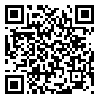Islamic Azad University of Zanjan
Abstract: (133 Views)
Most Sufis consider "love" (maḥabbat) as a mystical state, but Ibn Arabi categorizes it among spiritual stations. This descriptive-analytical research, based on library documentation, aims to answer important questions regarding the concept of love in Ibn Arabi and Izz al-Din Kashani's perspectives, and to explore the innovations each of these Sufi thinkers brought to the concept of love. According to the research findings, both Ibn Arabi and Kashani consider "jealousy" (ghayrat) an essential component of love, its most important characteristic being the requirement for concealment and veiling from others. In their conception of the two-way love between humans and God, they believe that understanding divine love depends on the perspective of Lordship and is contingent upon the existential capacity of the lovers. Both thinkers pay special attention to mystical union through the annihilation of the lover in the beloved; however, Kashani believes that to reach this stage, the lover must remove all attachments. Ibn Arabi rejects this view, considering attention to anything other than the true beloved as love in various forms of divine attributes, which is necessary in mystical wayfaring; if the lover confronts the level of divinity with their complete human essence, union is achieved. The concept of "yearning and longing" and its direct relationship with love, as well as how each thinker interprets it, also contains points of commonality, distinction, and innovation.
Article number: 13
References
1. Arabi, M. I. (2014). Futuhat al-Makkiyya [The Meccan Revelations] (M. Khajavi, Trans.). Mola Publications. (In Persian)
2. Attar Nishapuri, F. M. (1991). Tadhkirat al-Awliya [Memorial of the Saints] (R. A. Nicholson, Ed.). Safi Alishah Publications. (In Persian)
3. Ibn Manzur, J. M. (1988). Lisan al-Arab [The Arab Tongue]. Dar al-Ihya al-Turath al-Arabi. (In Arabic)
4. Jundi, M. M. (2002). Sharh Fusus al-Hikam Ibn Arabi [Commentary on Ibn Arabi's Bezels of Wisdom] (J. Ashtiani, Ed.). Bustan Ketab Publications. (In Persian)
5. Kalabadhi, A. M. (1992). Al-Ta'arruf li-Madhhab Ahl al-Tasawwuf [An Introduction to the Sufi School of Thought] (M. J. Shariat, Ed.). Asatir Publications. (In Persian)
6. Kashani, A. (2006). Istilahat al-Sufiyya [Sufi Terminology] (A. I. Kiyali, Ed.). Dar al-Kutub al-Ilmiyya. (In Arabic)
7. Kashani, I. M. (2006). Misbah al-Hidaya wa Miftah al-Kifaya [The Lamp of Guidance and the Key of Sufficiency] (E. Karbasi & M. R. Barzegar Khaleghi, Eds.). Zavvar Publications. (In Persian)
8. Kashani, I. M. (2012). Misbah al-Hidaya wa Miftah al-Kifaya [The Lamp of Guidance and the Key of Sufficiency] (J. Homaei, Ed.). Homa Publications. (In Persian)
9. Lawall, S. (1988). René Wellek and Modern Literary Criticism. Comparative Literature, 40(1), 3-24. https://doi.org/10.2307/1770524
10. Mawlawi, J. M. (2007). Mathnawi Ma'nawi [Spiritual Couplets] (T. H. Sobhani, Ed.). Rozaneh Publications. (In Persian)
11. Ning, W. (2001). Confronting Globalization: Cultural Studies Versus Comparative Literary Studies. Comparative Literature and Culture, 4(3), 55-66. https://doi.org/10.7771/1481-4374.1168
12. Payne, M. (2003). Dictionary of Critical Theory: From Enlightenment to Postmodernity (P. Yazdanjoo, Trans.). Markaz Publications. (In Persian)
13. Rodger, M. (2017). Khorasan Mysticism and Ibn Arabi: Differences in Spiritual Path. Journal of Islamic Denominations Research, 4(8), 151-174. (In Persian)
14. Sajjadi, S. J. (1994). Encyclopedia of Islamic Knowledge. Kumesh Publications. (In Persian)
15. Sarraj al-Tusi, A. A. (2001). Al-Luma' fi Tarikh al-Tasawwuf al-Islami [The Book of Light on the History of Islamic Mysticism] (K. M. al-Hindawi, Ed.). Dar al-Kutub al-Ilmiyya. (In Arabic)
Send email to the article author
| Rights and permissions | |
 |
This work is licensed under a Creative Commons Attribution-NonCommercial 4.0 International License. |




